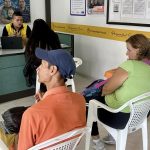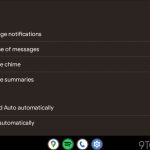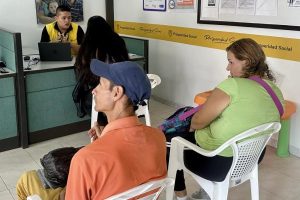( Spanish) — Of the multiple quotations that the US dollar has in Argentina, there is a variant called “savings dollar or solidarity dollar”, which is among the most convenient by market price, but it has two particularities: on the one hand, anyone can buy them if they have banked money to acquire up to US$ 200 per month but, on the other hand, fewer and fewer people have access to this type of dollar due to the restrictions that the Central Bank of Argentina (BCRA) has been imposing as its reserves are reduced.
How is the savings or solidarity dollar calculated?
The value of this dollar that can be legally purchased arises from adding to the price of the retail dollar (up to the closing of this article at 255.36 pesos) two taxes that were applied in different stages: first, with the creation of the Country tax, which represents 30%, then with an advance of 35% as Earnings, whose return can be requested from the Federal Administration of Public Revenues (AFIP) at the end of the period in question.
In summary, a 65% surcharge must be added to the daily price of the official retail dollar, which will tell us at what price the savings or solidarity dollar can be purchased. However, the fall in BCRA reserves has made the imposition of restrictions to access this type of dollar unfailing, so a key question arises: who can buy savings or solidarity dollars?
restrictions
Beyond the already mentioned quantitative limit of US$ 200 per month, the BCRA has established that those affected by any of the following impediments cannot buy savings or solidarity dollars:
- Not having sufficient economic capacity to invest in the exchange market.
- Buy above the quota of US$ 200 per month
- Try to buy more than US$100 in cash per month
- Be a beneficiary of government subsidies on utility rates
- Having been a beneficiary of the Emergency Work and Production Assistance Program (ATP), both as the person in charge of a commercial activity or as an employee of any company covered by the same regime
- To have reached the quota of US$ 200 per month through the purchase with credit cards
- Have refinancing of installments with credit card
- Have requested and have pending pledge or mortgage loans adjusted by the UVA index (Purchasing Value Unit)
- Having benefited from the Emergency Family Income (IFE)
- Receive subsidies from PAMI, the social work for retirees and pensioners
- Being suspended by the BCRA for purchases in the exchange market
- Carry out operations with securities
- Not having tax information from AFIP either because they are not registered or because they do not have economic activity
- These obstacles to buying the US currency have meant that the savings or solidarity dollar category has lost ground compared to others that are freely available, although less economical, such as the informal dollar or the financial CCL (Cash with liquidation) and MEP (Electronic Market of Payments).













